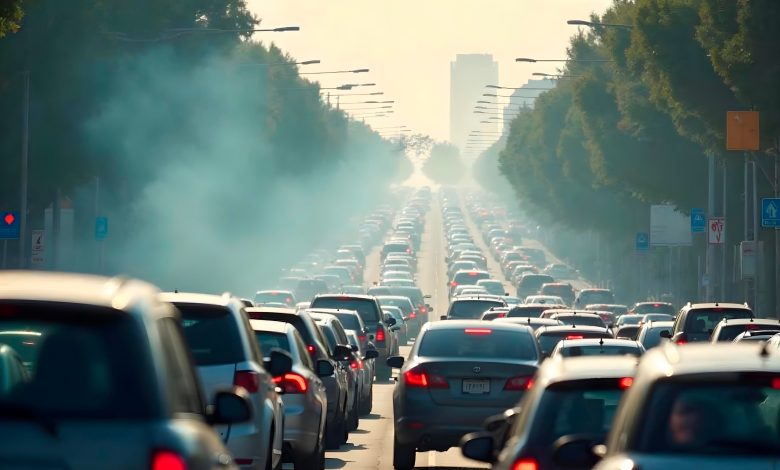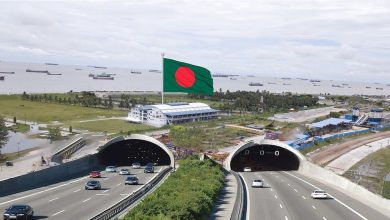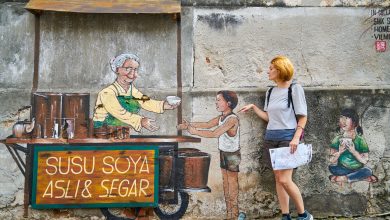Understanding Urban Congestion: Traffic Jam Paragraph for Students

Traffic jams are now a daily part of life in cities, especially in developing countries like Bangladesh. Whether you’re commuting to school, work, or an emergency service, being stuck on the road has become an unavoidable reality. The issue is more than just an inconvenience—it affects time, economy, health, and overall productivity. That’s why students are often asked to write a traffic jam paragraph in their academic exams. Understanding this problem at an early stage helps promote awareness and responsibility.
From large cities like Dhaka to smaller towns experiencing rapid urban growth, traffic congestion continues to worsen. This article will explore the causes, effects, and solutions to traffic jams while also including helpful paragraph samples for Class 8, SSC, and HSC levels.
Reasons Behind Traffic Jams

There are several factors that contribute to traffic congestion in cities. One of the most obvious is the rapid increase in vehicles on roads that were not designed to handle such volumes. In Bangladesh, motorcycles, buses, private cars, rickshaws, and CNGs all share the same narrow roads, creating a chaotic scene every day. Road infrastructure has not kept pace with the growth in population or transport needs.
Another cause is unplanned urban development. As buildings and shopping complexes are built without proper parking spaces, vehicles end up occupying roadsides. Illegal parking on both sides of a street reduces the usable road space, contributing directly to jams. Also, poor traffic management—such as broken signal lights, inefficient traffic police deployment, and absence of lane discipline—worsens the situation.
Additionally, street vendors, construction work, and political processions block key intersections during peak hours. The failure to create a proper public transportation system has also led to increased reliance on personal vehicles. All of these issues combine to form long, slow-moving queues that waste hours of a citizen’s daily life.
Sample Paragraph – Class 8
Traffic jam is a big problem in our town. Many vehicles come on the road every morning and evening. Because of this, the roads get blocked. I often get late to school because of traffic jam. People become angry and make noise. Ambulances and fire trucks also get stuck. If everyone follows traffic rules and the roads become bigger, then we can stop traffic jams. We must act soon to solve this problem.
How Traffic Congestion Affects Daily Life

The impact of traffic congestion is far-reaching. It affects people from all walks of life, from school-going children to elderly patients trying to reach a hospital. A typical office worker may spend 2–3 hours daily in traffic, leading to stress, reduced family time, and lost productivity. Similarly, students often arrive late to class or feel tired and distracted by the time they reach school.
Health problems are also a major concern. Sitting in traffic for long periods in polluted air causes respiratory issues, eye irritation, and headaches. Noise pollution from continuous honking adds to the stress. Many people report anxiety, fatigue, and back pain due to prolonged traffic waits.
Economically, traffic jams cause huge losses. Idling engines waste fuel, delivery vehicles arrive late, and workers lose valuable hours. In larger cities, this adds up to millions of taka every day. Emergency services like ambulances and fire brigades are often delayed, risking lives in critical moments.
Writing a traffic jam paragraph should highlight how this issue is not just about inconvenience—it has serious social, physical, and economic consequences. As the population increases, traffic jams are becoming an obstacle to development.
Sample Paragraph – SSC
Traffic jam is one of the major problems in our country. It creates serious problems for students, workers, and emergency services. Due to traffic jams, people reach their destination late and waste a lot of time. It also causes air pollution and noise pollution. Many office workers and school children suffer from physical stress and mental tiredness. Traffic jams also lead to more fuel consumption and economic loss. The main causes are too many vehicles, illegal parking, and poor traffic control. To reduce traffic jams, we must build better roads and improve public transport.
Preventive Measures and Long-Term Solutions
Solving the traffic jam problem requires long-term planning, public awareness, and strict law enforcement. First, improving road infrastructure is essential. More flyovers, bypasses, and expanded roads can help distribute vehicle flow more evenly. Governments should also invest in underground subways or elevated metro rail systems to reduce surface-level pressure.
Public transportation must be made more attractive. Buses should be comfortable, punctual, and affordable to encourage people to leave their private vehicles at home. Introduction of modern, eco-friendly buses can reduce pollution and traffic volume. Digital ticketing and route apps can help users plan their travel better.
On the law enforcement side, parking regulations must be strictly implemented. Traffic police should monitor key intersections and remove illegally parked vehicles. Using smart traffic signals and surveillance cameras can help manage traffic flow in real time. School and office timings can also be staggered to avoid peak hour pressure.
Finally, public awareness campaigns should encourage carpooling, walking short distances, and following traffic rules. Citizens also need to change their behavior—patience, discipline, and awareness can go a long way. A future without traffic jams is possible with joint efforts from both authorities and the public.
Sample Paragraph – HSC
Traffic congestion is one of the most pressing issues in modern urban life, especially in countries like Bangladesh. This problem affects not only individuals but also the economy and national development. To address this, we need strong public transport systems such as metro rail and high-speed buses. Road expansion, construction of flyovers, and implementation of digital traffic management systems are essential. Moreover, drivers must be educated and penalized for breaking traffic laws. If everyone—government, planners, and citizens—works together, we can reduce this growing problem. A modern city must be free from such barriers to progress. For students and writers, preparing a well-written traffic jam paragraph helps reflect on these real-life challenges and think about practical solutions.
FAQs
Q1: Why do traffic jams occur in cities like Dhaka?
A: Traffic jams happen due to too many vehicles, narrow roads, illegal parking, poor traffic control, and lack of public transport.
Q2: How does traffic jam affect students?
A: Students often reach school late, feel tired, and lose valuable study time because of long delays on the road.
Q3: What can citizens do to reduce traffic jams?
A: Citizens can follow traffic rules, avoid unnecessary travel, use public transport, and avoid illegal parking.
Q4: Is public transportation a solution to traffic problems?
A: Yes, good public transport reduces the number of private vehicles, easing congestion and pollution.
Q5: What role does technology play in traffic management?
A: Smart traffic lights, real-time monitoring, and digital route planning can improve traffic flow and reduce jams.
Q6: How can writing a traffic jam paragraph help students?
A: Writing a traffic jam paragraph helps students understand real-world problems, think critically about solutions, and improve their descriptive and analytical writing skills.
Conclusion
In conclusion, traffic congestion is a modern-day crisis that affects urban life in many ways. From lost time and health hazards to economic damage and social stress, the effects are wide-ranging. However, with proper planning, better transportation systems, and public cooperation, the problem can be minimized.
A well-written traffic jam paragraph should not only describe the issue but also encourage responsible behavior and hopeful solutions. Students are the future drivers, planners, and decision-makers—understanding and addressing this issue starts with them.




